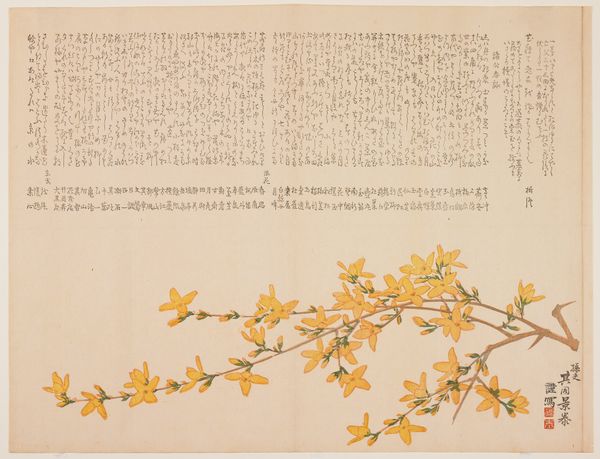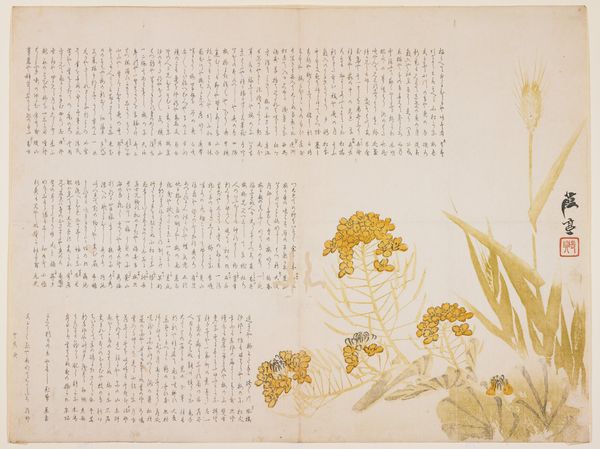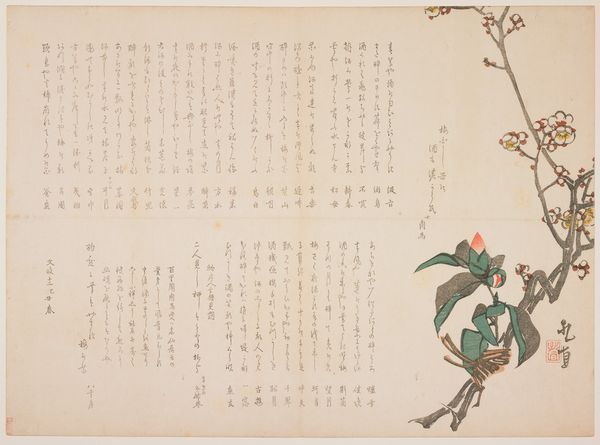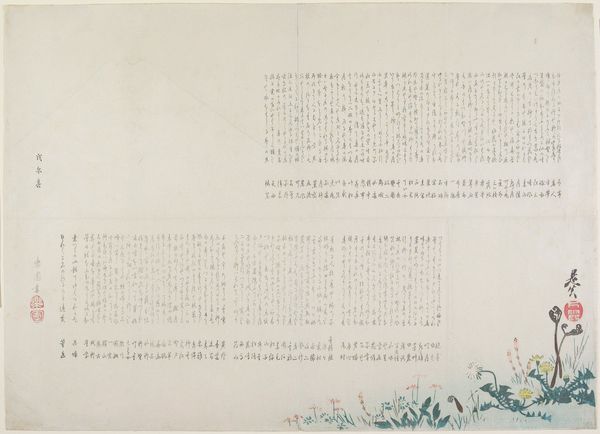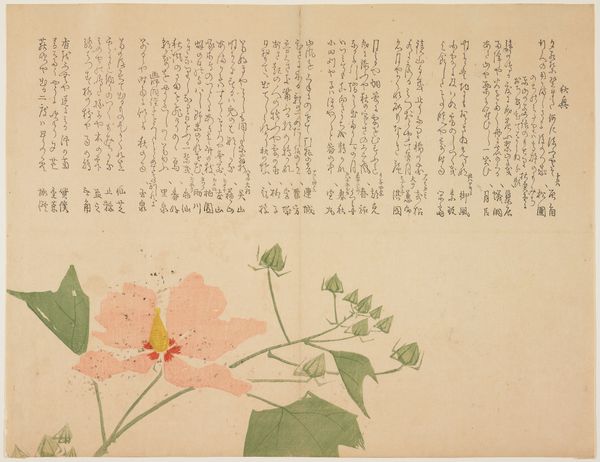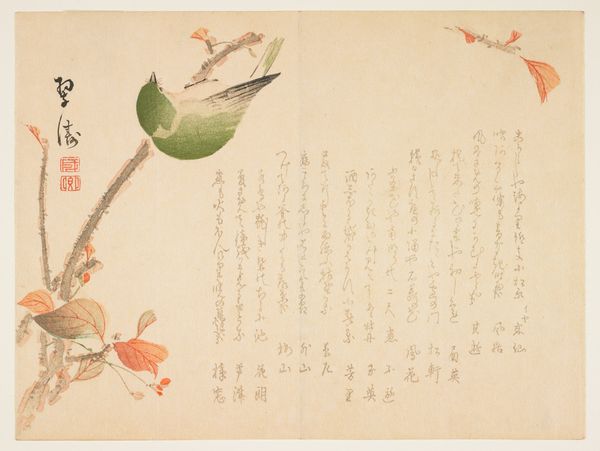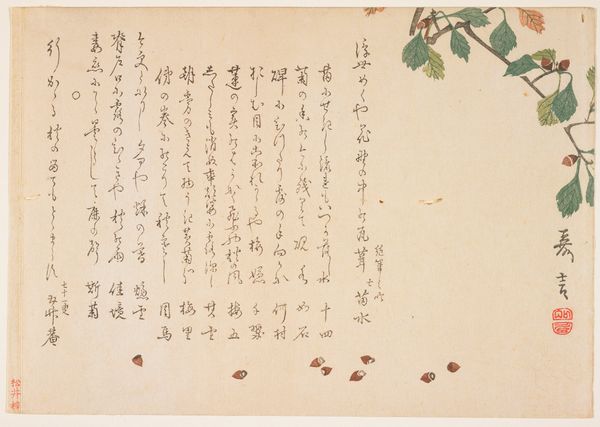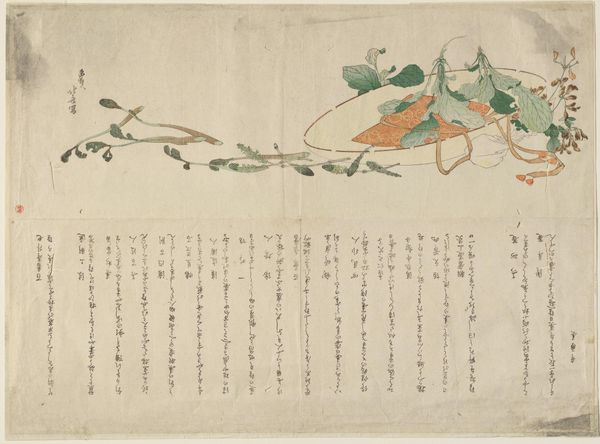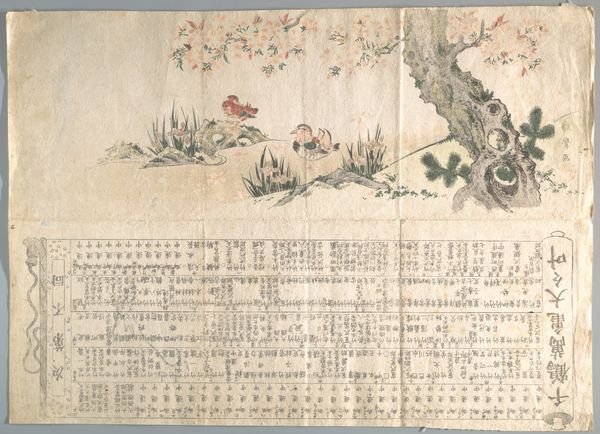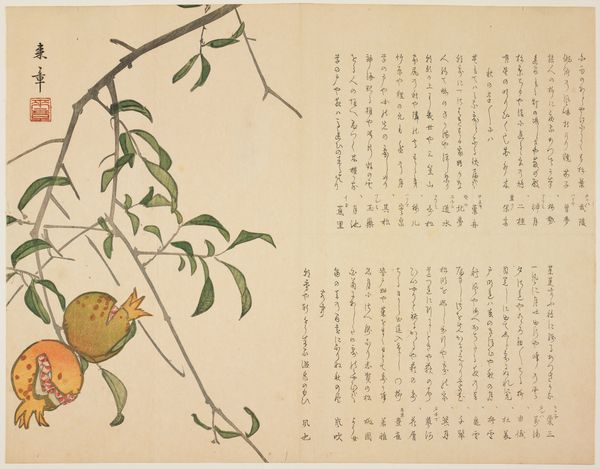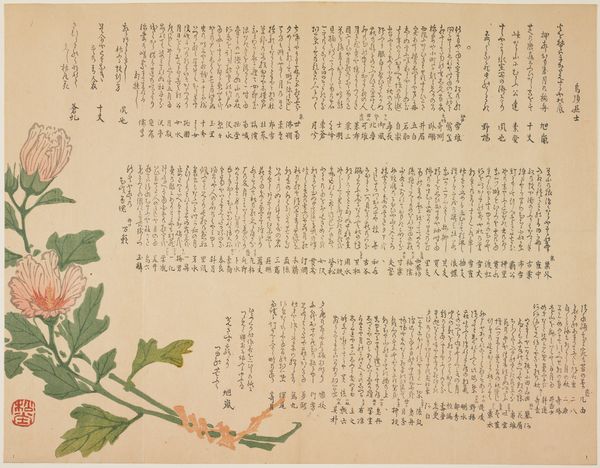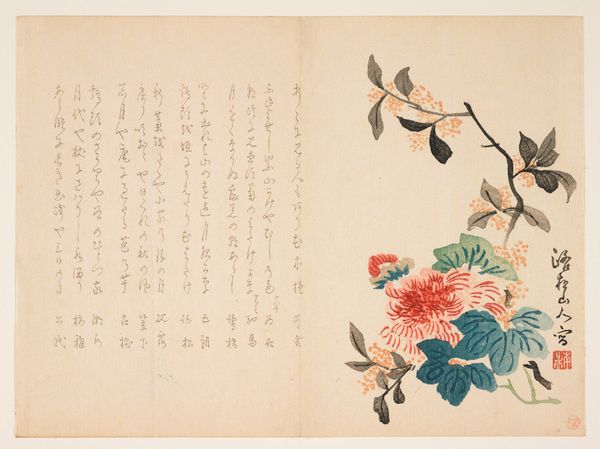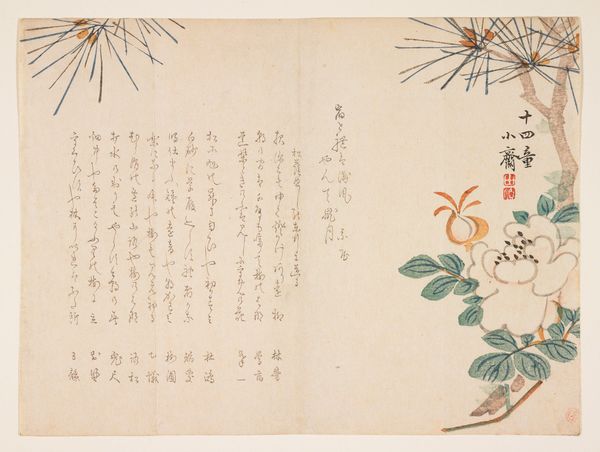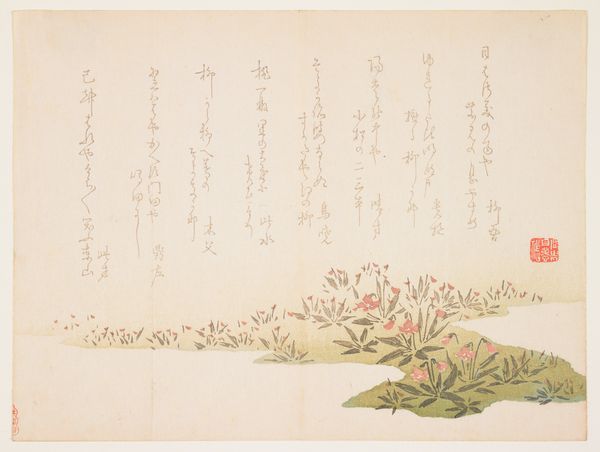
Dimensions: 15 x 19 3/8 in. (38.1 x 49.2 cm) (image, sheet)
Copyright: Public Domain
Editor: Here we have Kitagawa Saigyo's "Purple Magnolia," created around 1827. It seems to be a watercolor and ink print on paper. What strikes me is the contrast between the very detailed flower at the bottom and the dense calligraphy above. How do you see this piece? Curator: For me, this work speaks volumes about the intertwined roles of art, craft, and social standing. The labor involved in both the creation of the print itself, the grinding of ink, preparation of the paper, and the skilled brushwork, alongside the calligraphic text, signals a cultural value system. Editor: So, you are saying that materials, their origins and manipulation, tell a deeper story than the image itself? Curator: Precisely. Consider the paper: its production involved numerous artisans, the type of fibres used. How does the availability and quality of materials relate to who could access and create art? The choice of ink, too, carries weight. What would cheaper ink have signaled, versus one meticulously produced? Editor: I never thought about it that way! It is not just *what* is depicted, but the means *how* that speaks volumes of its meaning. But wouldn't the poem written atop have significance for those consuming and creating this print? Curator: Definitely. And its textual elements provide additional, although elitist, dimensions for interpretation. But that's precisely my point, to interrogate assumptions: Is the value primarily aesthetic, residing in the image of the flower itself, or does it lie in the *means* of its creation and who gets to consume it? Editor: That’s a perspective shift for me, thinking about the labor and materials involved beyond just the final image. It encourages me to examine the context surrounding this piece beyond its obvious beauty. Curator: Indeed. By acknowledging materiality, production and distribution processes we appreciate "Purple Magnolia" less as a isolated depiction, more as an emblem of socio-economic interactions within its historical setting.
Comments
No comments
Be the first to comment and join the conversation on the ultimate creative platform.
